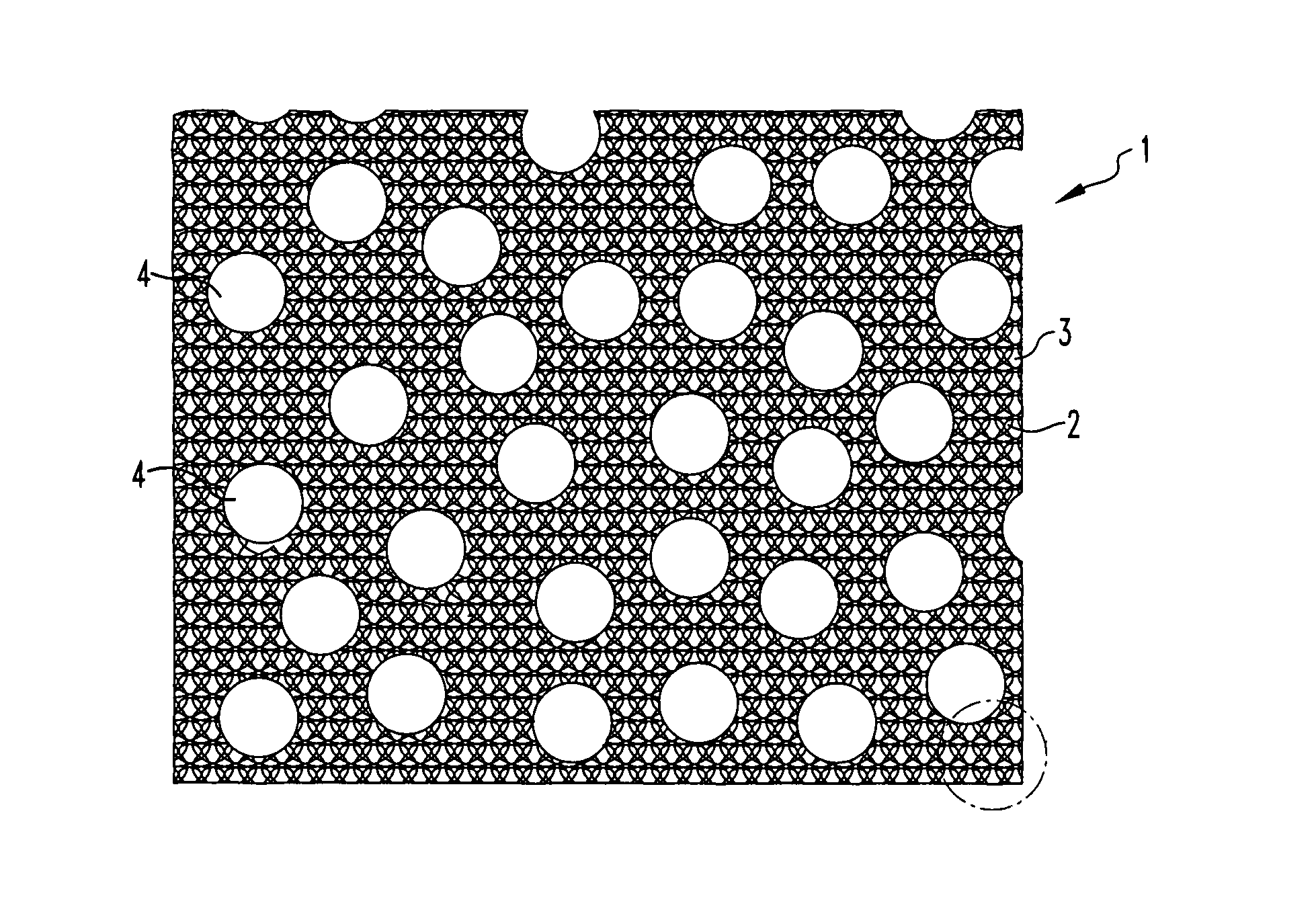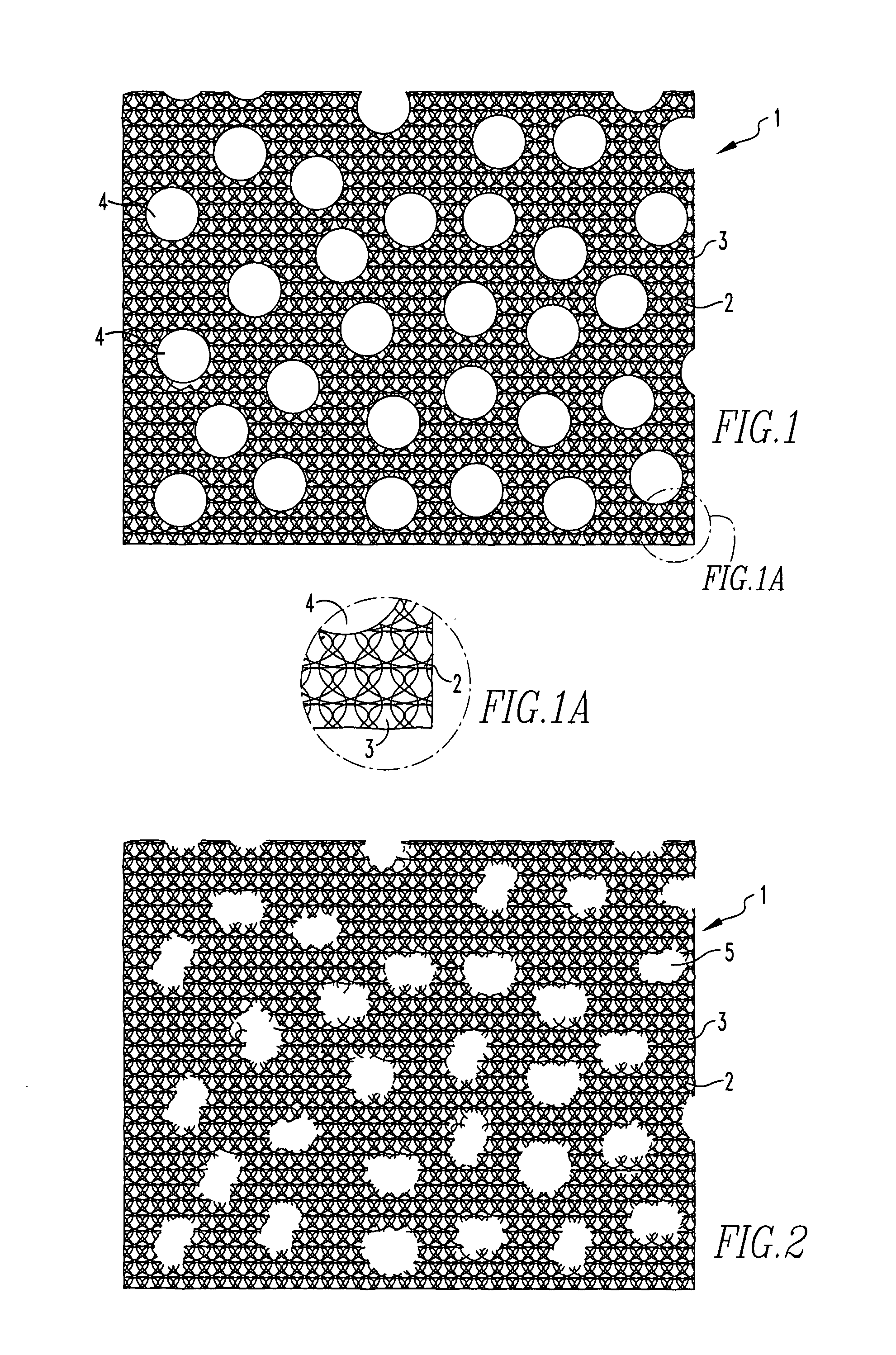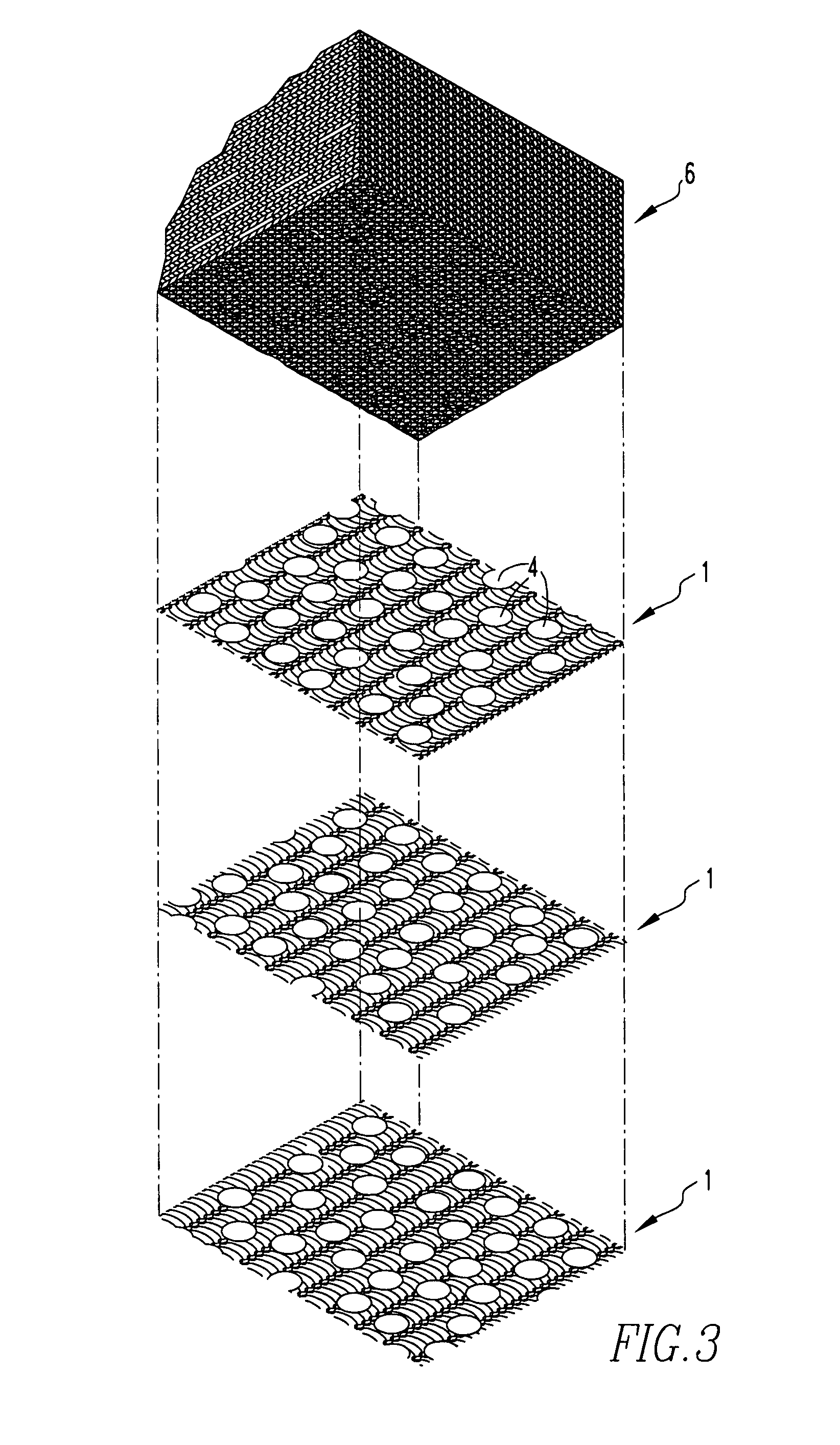Filamentary pad for improved mist elimination and mass transfer
a technology of mesh pads and filaments, applied in the field of filamentous knitted or woven mesh pads, can solve the problems of complex and expensive construction, inability to make structured mesh pads of ozolins, et al., to be made by the conventional stacked horizontal layer assembly method, and increase the cost and complexity of construction. , to achieve the effect of maximizing gas flow
- Summary
- Abstract
- Description
- Claims
- Application Information
AI Technical Summary
Benefits of technology
Problems solved by technology
Method used
Image
Examples
Embodiment Construction
[0026]The invention will now be described in detail in relation to a preferred embodiment and implementation thereof that is exemplary in nature and descriptively specific as disclosed. As is customary, it will be understood that no limitation of the scope of the invention is thereby intended. The invention encompasses such alterations and further modifications in the illustrated method and apparatus, and such further applications of the principles of the invention illustrated herein, as would normally occur to persons skilled in the art to which the invention relates.
[0027]As used herein, in the specification and claims, including as used in the examples and unless otherwise expressly specified, all numbers may be read as if prefaced by the word “about”, even if the term does not expressly appear. Also, any numerical range recited herein is intended to include all sub-ranges subsumed therein.
[0028]It has been discovered that the re-entrainment or flooding capacity of a filamentary ...
PUM
| Property | Measurement | Unit |
|---|---|---|
| diameter | aaaaa | aaaaa |
| density | aaaaa | aaaaa |
| area | aaaaa | aaaaa |
Abstract
Description
Claims
Application Information
 Login to View More
Login to View More - R&D
- Intellectual Property
- Life Sciences
- Materials
- Tech Scout
- Unparalleled Data Quality
- Higher Quality Content
- 60% Fewer Hallucinations
Browse by: Latest US Patents, China's latest patents, Technical Efficacy Thesaurus, Application Domain, Technology Topic, Popular Technical Reports.
© 2025 PatSnap. All rights reserved.Legal|Privacy policy|Modern Slavery Act Transparency Statement|Sitemap|About US| Contact US: help@patsnap.com



